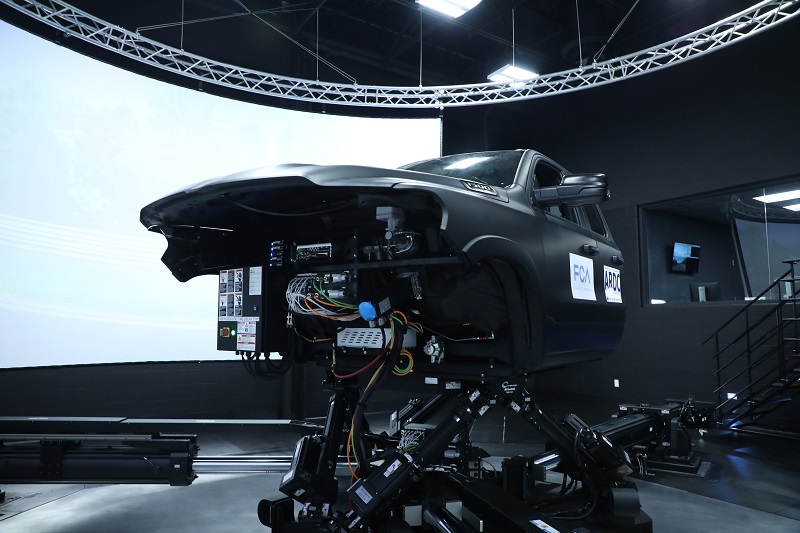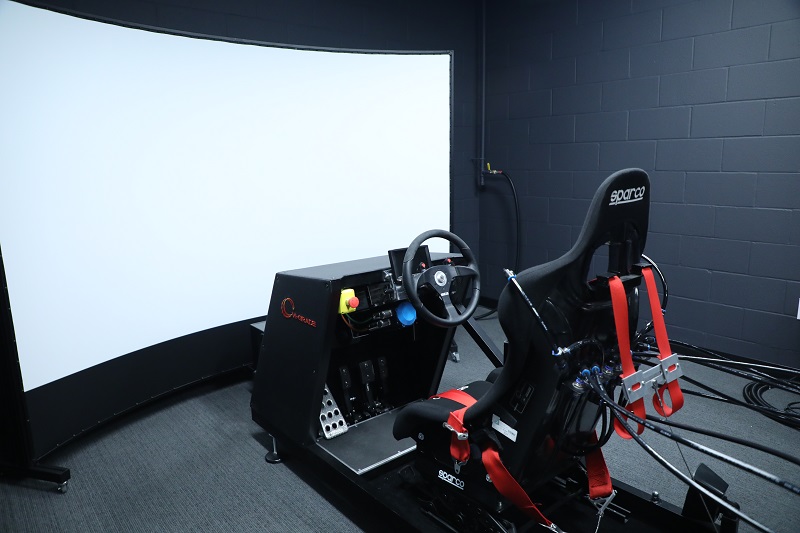Fiat Chrysler opens a C$10.1 million ($7.6 million) Vehicle Dynamics Simulator laboratory in Windsor, ON, Canada, a technology that closely duplicates the actual driving experience and is expected to help the automaker reduce product-development times and project validation costs.
Product development is the lifeblood of an automaker and the faster an OEM can bring new products to market the more effectively it can meet changes in consumer demands. Product development also is the biggest expenditure an OEM makes, so even the slightest reduction in cost can save millions of dollars.
“Our new VDS is cutting-edge technology that emulates a vehicle’s driving dynamics in a real-time, virtual environment,” says Tony Mancina, head of Engineering-FCA Canada.
“This new technology offers the driver a customized virtual immersion that replicates the ride and handling of a specific vehicle on a multitude of simulated road surfaces and driving environments,” Mancina says in a statement.
Located at the FCA Automotive Research and Development Centre in Windsor, the VDS makes use of nine actuators to create additional ranges of motion that create a closer immersion to an actual vehicle, the automaker says, whereas most driving simulators use six actuators to deliver six so-called “degrees of freedom.” FCA calls it the most advanced technology of its kind in North America.
FCA says a notable feature of the unit is a three-micron cushion of air, which floats the entire 4.5-ton motion platform above the floor like a hovercraft or air-hockey puck, allowing for a quiet and seamless motion via the massive electric actuators.

FCA calls new simulator most advanced in North America.
Subsystems such as the brakes and the steering, ABS and ESC controllers also can be added to the simulator to create a hardware in the loop test bench to better meet functional targets, which leads to the lower product development times and lower project validation costs.
Beyond timetables and costs, the new simulator should help FCA improve the safety of its vehicles as more advanced driver assistance systems are added. ADAS are the building blocks for autonomous driving. The simulator also could increase driving enjoyment, since it will give engineers more accurate feedback to more precisely tune a vehicle’s ride and handling.
“The ability to simulate a drive experience with hardware in the loop is key to our engineering efforts and assists in identifying design changes much earlier in the development process,” says Rob Wichman, head of Vehicle Engineering-FCA.
“By using simulators, we can create a virtual environment to assess the ride and handling of a vehicle, perform tests on sensor technology for (ADAS) applications, evaluate different human machine-interface configurations and test for driver distraction and distraction remedies.”
FCA says the simulator can be fitted with any vehicle body, road or environment. To create a visual experience on the five projector screens, data is collected by scanning the environments and the different roads, such as FCA’s proving grounds in Michigan. The data is then stitched together to create a real-time virtual environment that can include elevation changes, off-camber roads and potholes, the automaker says.
The VDS initially will support the automaker’s Chassis Vehicle Dynamics group, but in the future will be applied to development of ADAS, HMI systems. VI-grade, a global developer of software and services for system-level simulation, aided FCA in development of the VDS. A grant from the government of Ontario through its SouthWest Ontario Development supported the FCA investment.

Cockpit of VDS.





